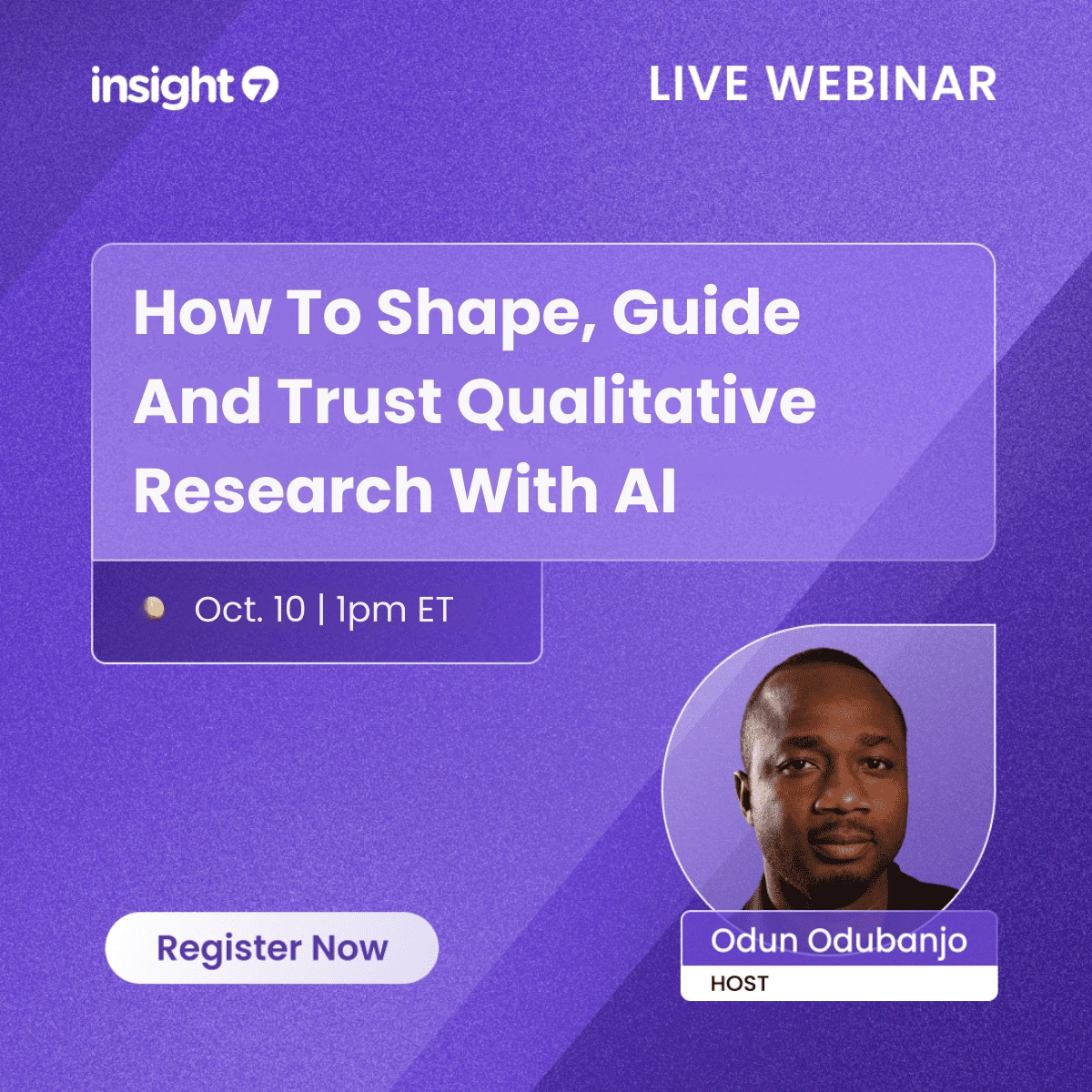AI Tools for Detecting Misaligned Brand Promises in Buyer Conversations
-
Bella Williams
- 10 min read
In a competitive market, understanding your customers' expectations is invaluable. Brand Promise Monitoring is essential for ensuring that what you promise aligns with what buyers experience in their conversations. Misalignment can lead to missed opportunities and eroded trust, making it crucial to detect issues early.
Effective monitoring of brand promises involves examining conversations to identify gaps. Advanced AI tools can analyze dialogue, providing insights on customer sentiment and experiences. By focusing on these insights, businesses can make informed adjustments, ultimately ensuring stronger relationships with customers and enhanced brand integrity.
Analyze & Evaluate Calls. At Scale.

Understanding Misaligned Brand Promises
Brands often establish promises based on the value they claim to deliver. However, when these promises do not align with customer experiences, they lead to misalignment. Understanding this issue is crucial for maintaining authenticity and trust between a brand and its audience. Misaligned brand promises can stem from several factors, including unrealistic expectations set during marketing, inconsistencies in customer service, or even a lack of clarity in communication.
To effectively manage and rectify misalignments, organizations must prioritize brand promise monitoring. Regularly assessing customer conversations can unveil discrepancies between promised and delivered experiences. In doing so, businesses can identify and address gaps before they further erode trust. By using AI tools designed for monitoring these insights, companies can transform these conversations into actionable strategies, ensuring that their brand promises resonate authentically with their audience.
The Importance of Brand Promise Monitoring
Brand promise monitoring is crucial in maintaining the integrity of a brand's commitment to its customers. In buyers' conversations, misalignment can quickly erode trust and lead to dissatisfaction. By actively monitoring how brand promises are communicated and perceived, organizations can identify discrepancies and adjust their messaging accordingly. This process ensures that what a brand claims aligns with what customers experience, fostering stronger relationships.
The impact of brand promise monitoring extends beyond just correcting misunderstandings. It also provides valuable insights into customer expectations and emerging trends. Monitoring can illuminate potential gaps, allowing organizations to proactively address issues before they escalate. Regularly assessing brand promises through customer interactions equips teams with the necessary data to refine their offerings continuously. Ultimately, organizations that prioritize this monitoring can enhance customer loyalty, drive long-term success, and maintain a competitive edge in the market.
Common Causes of Misalignment
Misalignments often stem from several common issues that disrupt the integrity of brand promise monitoring. First, inconsistent messaging across platforms can create confusion and erode trust. When customers receive different messages through social media, websites, or advertisements, it becomes challenging for them to understand what a brand stands for. This leads to discrepancies in buyer conversations, resulting in unmet expectations and negative experiences.
Secondly, a lack of buyer feedback can contribute significantly to misalignment. Without actively seeking customer insights, brands may find themselves disconnected from their target audience's needs and perceptions. This disconnect can result in products or services that do not align with initial promises. Thirdly, an underestimation of competitor actions can also lead to misalignment. Brands may inadvertently stray from their core messaging while attempting to respond to shifts in the market or competitors, creating further discrepancies in brand promise monitoring.
AI Tools for Brand Promise Monitoring: Detecting Misalignment in Conversations
AI tools for brand promise monitoring play a pivotal role in detecting misalignment in conversations between brands and consumers. These tools analyze customer interactions, providing insights into how well a brand’s messages are received and understood. Misalignment often stems from discrepancies between brand promises and the actual customer experience. Monitoring these dialogues is crucial for identifying gaps or inconsistencies that may negatively impact customer trust.
To effectively utilize AI in brand promise monitoring, several tools stand out. Insight7 can help in accurately analyzing conversations and identifying areas of misalignment. Other tools like DialogTech and Gong.io focus on conversation intelligence, enabling brands to capture customer sentiments in real-time. Tether specializes in engagement metrics, while Clarabridge offers comprehensive feedback analysis. Together, these technologies empower brands to maintain consistency in their messaging and ensure they deliver on their promises, ultimately fostering stronger customer relationships.
Extract insights from interviews, calls, surveys and reviews for insights in minutes
insight7: A Leading AI Tool
Harnessing the power of advanced technology, insight7 emerges as a leading AI tool specifically designed for effective Brand Promise Monitoring. This tool delicately analyzes buyer conversations, identifying any discrepancies that may arise between what a brand promises and the experiences conveyed by customers. By focusing on real-time insights, businesses can pivot their strategies swiftly, ensuring alignment with their brand’s commitments.
The functionality of insight7 lies not just in data collection but also in comprehensive analysis. With its sophisticated algorithms, it decodes emotional tones and key themes in customer interactions. This empowers organizations to address misaligned promises head-on and strengthen the connection with their audience. By utilizing such a proactive approach, brands can foster trust and loyalty, enhancing customer satisfaction and ultimately driving growth in a competitive marketplace.
Additional AI Tools for Brand Promise Monitoring
To enhance Brand Promise Monitoring, integrating advanced AI tools can significantly amplify your understanding of customer conversations. These tools enable businesses to scrutinize dialogue for consistency between what is promised and what is experienced. For instance, DialogTech offers a platform that allows companies to analyze voice interactions, providing insights into how effectively brand messages are communicated. Similarly, Gong.io utilizes conversation analytics to ensure that customer interactions align with intended brand narratives.
Additionally, Tether excels in gathering qualitative feedback from customer interactions, allowing brands to identify discrepancies in their value propositions. Clarabridge, on the other hand, combines text and sentiment analysis to gauge customer emotions and perceptions, effectively flagging areas where expectations are not met. Embracing these AI tools for Brand Promise Monitoring not only fosters a deeper connection with your audience but also helps in maintaining trust and satisfaction by addressing misalignments proactively.
Tool 1: DialogTech
DialogTech plays a vital role in the realm of Brand Promise Monitoring, offering advanced solutions for analyzing buyer conversations. This tool harnesses the power of AI to accurately capture and evaluate customer interactions, ensuring alignment with brand commitments. By integrating voice recognition and natural language processing, DialogTech provides insights into how well a brand's promises resonate during conversations.
One key feature of DialogTech is its ability to identify and report discrepancies between what customers expect and what brands deliver. This helps businesses proactively address issues, adapt messaging strategies, and ultimately strengthen brand integrity. Moreover, the data collected enables organizations to track trends over time, allowing for continuous improvement in customer engagement. As organizations strive for authenticity and reliability, leveraging DialogTech can enhance their understanding of brand-consumer relationships and ensure that brand promises are consistently met.
Tool 2: Gong.io
In the quest for effective brand promise monitoring, understanding buyer conversations becomes essential. By analyzing these discussions, organizations can uncover gaps between what they promise and what customers experience. A valuable tool for this purpose is designed to capture detailed insights from sales calls, enabling teams to identify misalignments in brand promises. Users can track key phrases and responses that indicate customer sentiments, making it easier to spot deviations from the intended message.
Equipped with AI capabilities, this tool automates the analysis process, highlighting critical moments and trends. It efficiently transcribes conversations, analyzes data for compliance with brand standards, and provides actionable insights. This enables businesses to refine their messaging and adjust strategies based on real-time feedback. A thorough understanding of these dynamics is vital for ensuring that the brand promise aligns with customer perceptions, fostering trust and loyalty in the long run.
Tool 3: Tether
Tether serves as an essential glue in the realm of Brand Promise Monitoring, enabling businesses to connect insights from buyer conversations seamlessly. This tool consolidates data from various customer interactions, allowing brands to observe and assess whether their messaging aligns with their actual promises. By analyzing conversation patterns, Tether highlights discrepancies that might lead to customer dissatisfaction or distrust.
One of the key functionalities of Tether is its ability to surface misalignments between stated promises and the actual experiences of buyers. This analysis not only identifies issues but also provides actionable recommendations to enhance brand messaging. As companies aim for authenticity and trust, engaging with Tether can streamline the process of aligning brand promises with customer perceptions. Ultimately, utilizing this tool helps brands reinforce their reputation and improve customer loyalty, ensuring that promises made in conversation resonate with customer experiences.
Tool 4: Clarabridge
Clarabridge provides a comprehensive solution for monitoring brand promises through conversational analysis. This tool utilizes advanced AI algorithms to sift through customer interactions, offering insights into how closely company communications align with consumer expectations. By focusing on sentiment analysis, Clarabridge identifies areas where the brand might not be delivering on its promises, helping organizations adjust their strategies accordingly.
When implementing Clarabridge, there are several key features to consider. First, its ability to analyze customer feedback from various channels ensures a holistic view of brand perception. Next, the platform's advanced reporting tools summarize key insights, allowing teams to make informed decisions quickly. Finally, the integration capabilities with existing CRM systems enhance data usability, making it easier to address misalignments promptly. By prioritizing brand promise monitoring, businesses can refine their messaging and foster deeper customer trust.
Conclusion: The Future of Brand Promise Monitoring in AI-driven Insights
The future of Brand Promise Monitoring holds immense potential as AI technologies continue to evolve. By utilizing advanced analytics and natural language processing, brands can better understand customer sentiments and expectations regarding their promises. This not only allows for real-time adjustments in messaging but also fosters deeper connections with consumers across various platforms.
As businesses increasingly adopt AI-driven insights, the ability to detect misaligned brand promises will become more refined. By integrating these tools, companies can ensure that their communications resonate authentically, enhancing overall brand trust. Continued advancements in AI will empower organizations to stay ahead of shifts in consumer behavior and preferences, paving the way for more effective and meaningful brand engagement.







